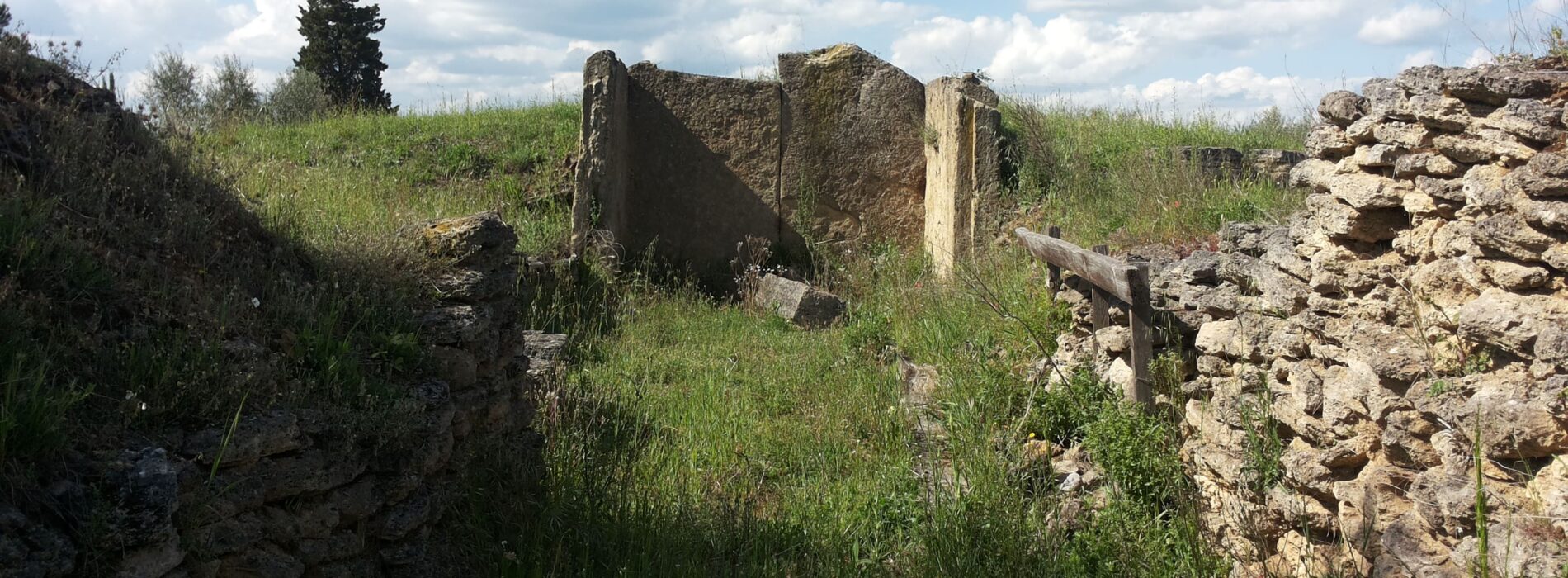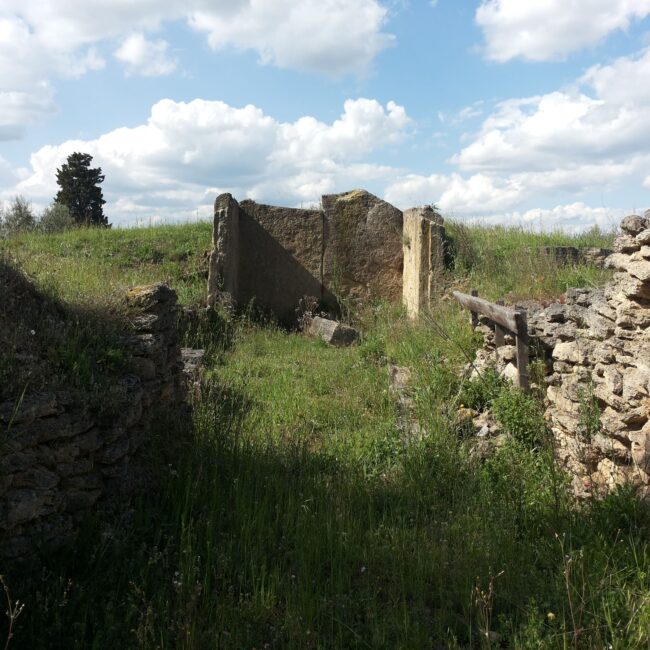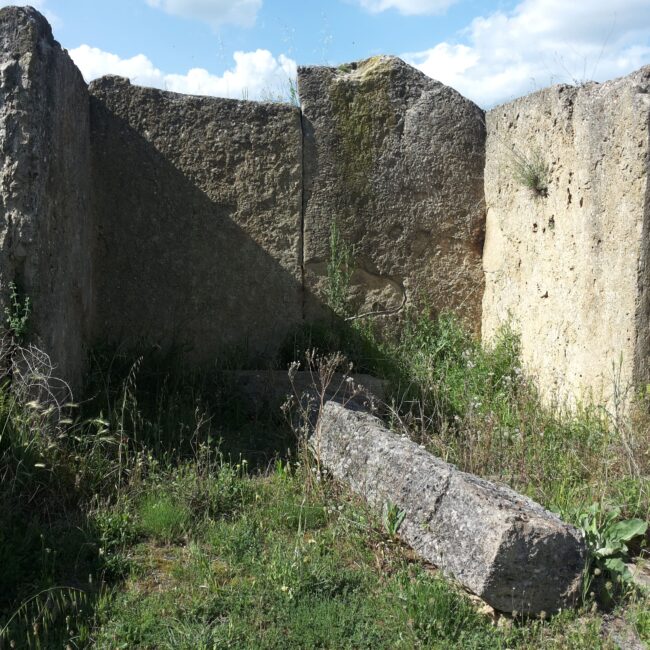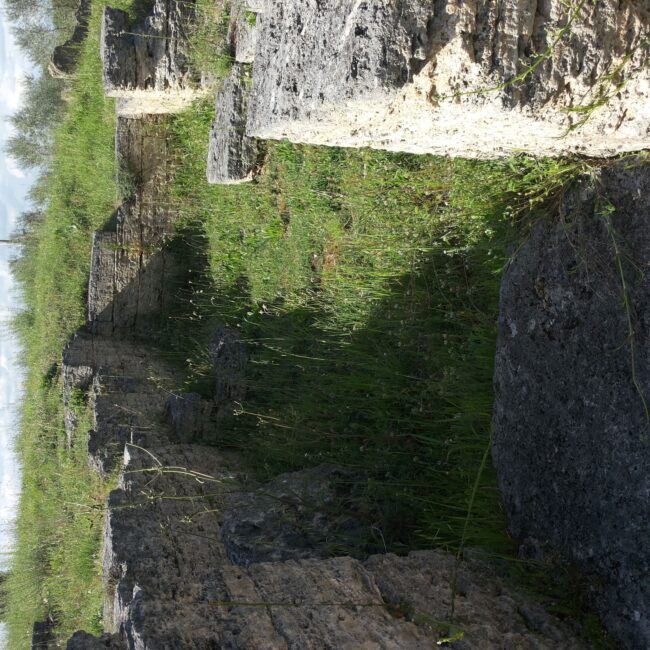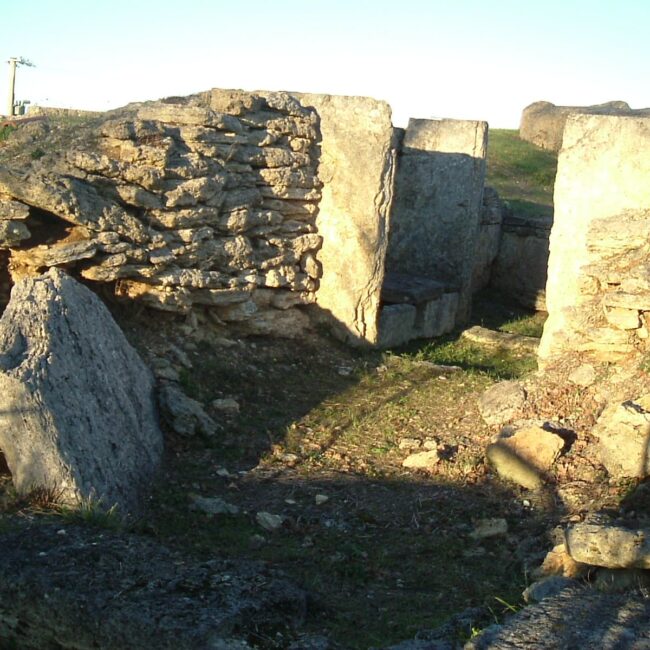The Molinello Tumulus
The Discovery
In the late 1940s, the area between the Molinello and Sasseto farms was identified by Guglielmo Maetzke (Florence, 1915-2008) due to numerous archaeological findings, especially during the planting of an olive grove. The oldest traces date back to the Neolithic, and from the Villanovan period (9th-8th century BC), the area was used as a burial site. Particular attention was paid to a promontory near the Molinello farm, where a funerary chamber had been discovered. Maetzke hypothesized that it could be an Etruscan mound, due to the presence of some stone structures emerging at the base of the hill. His intuition was correct.
The first excavation campaigns at the site were organized by the Archaeological Superintendency of Tuscany about ten years later. In 1960-1961, Anna Talocchini led research that uncovered the perimeter of the mound and five chamber tombs (Tombs A-E). In the 1980s (1981-1989), Elisabetta Mangani completed the project with the exploration of the remaining ten tombs (F-Q).
The tumulus
The mound, built on a leveled travertine shelf, is surrounded by a circular structure (drum) with a maximum diameter of 38.60 meters, made with local stone material. The oldest tombs (B, E, L) are located in the central part and date back to the 7th-6th century BC, while most of the other burial chambers (C, D, G, H, I, M, N, O, P, Q) date to the 6th century BC. The last phase of use of the mound spans from the 3rd century to the end of the 1st century BC, during which Tombs A and F were constructed, containing numerous inscribed cinerary urns belonging to the princely Marcni family.
The museum displays a selection of artifacts from some of the tombs of the mound, offering a fascinating testimony of this ancient necropolis.
The Statues
During the excavation investigations, three fragmented statues were found out of context, which, according to researchers, must have decorated the long dromos of Tomb B, representing the ancestors of the deceased. Stylistically, these statues show a strong affinity with the "Daedalic" tradition and are attributable to the 7th-6th century BC productions of Chiusi.
The term "Daedalic style" comes from the mythical Greek sculptor and architect Daedalus; in modern studies, it primarily refers to 7th-century BC Greek sculptures influenced by Egyptian art. This style is characterized by almond-shaped eyes, oval or triangular faces, "staircase" hairstyles, and engraved details.
The Sarcophagus of the Spouses
During the 1960s excavations, the lid of a sarcophagus made of fetid stone was found in Tomb B, depicting a couple of spouses lying at a banquet, with some faint traces of the original painting still visible. At the time of discovery, the work was extremely fragmented, and unfortunately, the heads of the spouses were missing. Despite this, details such as the folds of the garments, jewelry, and the cushions on which the bodies rest can still be appreciated. This artifact, comparable to Tarquinian, Cretan, and Chiusi productions, is dated to the last quarter of the 6th century BC and represents one of the oldest examples of a sarcophagus with a couple at a banquet found in Northern Etruria.
The Tumulus in 3D
